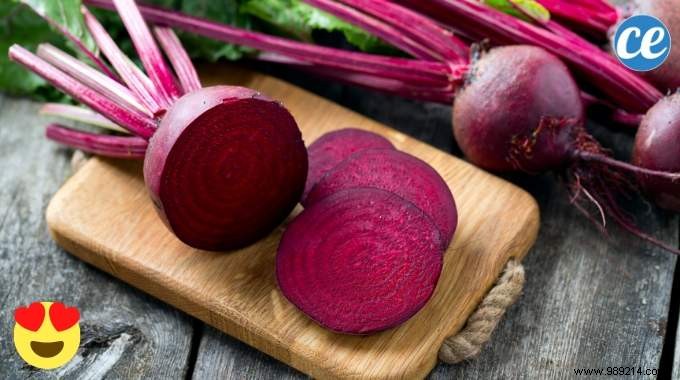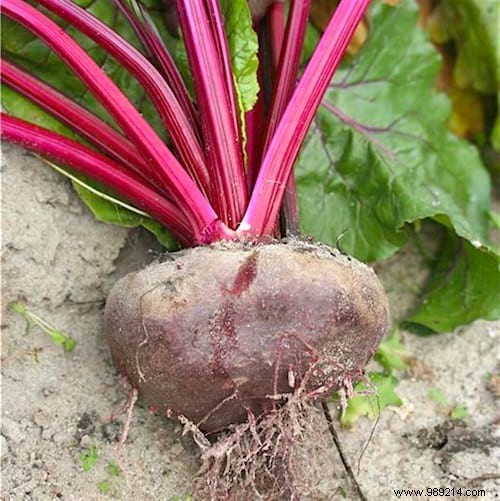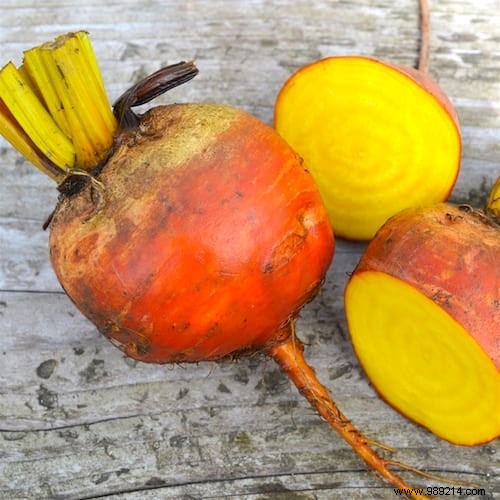
Yum, good red beets from the garden!
Cooked and diced, with a minced red onion...
A few cubes of feta, walnut oil and crunchy lettuce… A real delight!
Particularly rich in vitamins and minerals, beetroot is one of the most nutritious vegetables in the garden.
In addition, this vegetable with a fine sweet flavor is easy to grow and can be eaten all winter long if it is well preserved.
Here are10 gardening tips for growing beautiful beets :

Click here to easily print this guide in PDF.
1. Plant the beets in a place with direct sun exposure (at least 10 h per day).
2. The ideal soil pH should be between 6.0 and 7.0.
3. Before planting, remove any stones that could deform the roots, and incorporate compost into the soil.
4. Before sowing, work the soil in furrows spaced 30 to 40 cm apart. Then place the beet seeds every 30 to 45 cm and cover with about 1 cm of soil.
5. To have very fleshy roots, keep the soil well moist during the growth phase of the tuber.
6. Soak the beet seeds in lukewarm water for a few hours to soften their husks and speed up their germination.
7. Beet seeds are actually a kind of cluster of 2 to 3 seeds that will all germinate. When the plants have 3 to 4 leaves, it is therefore necessary to thin them:leave only the most beautiful plant and transplant the most vigorous of the uprooted plants elsewhere.
8. Few insects attack the beet, but leaf miners, flea beetles and citadels can ravage its leaves. In case of infestation, protect young plants by covering them with a protective veil and leave it in place until harvest.
9. Cut the beet leaves when they measure 3 to 5 cm to eat them raw in salads. Harvest beet roots as needed, as soon as they reach the size of a golf ball (4 to 5 cm in diameter). Smaller leaves and roots taste better.
10. Before storing the roots in the refrigerator in a freezer bag, cut the foliage leaving 3 to 5 cm of the stems intact.

- In the vegetable garden, beetroot goes perfectly with kohlrabi, kidney bean, lettuce and onion. Click here to discover the guide to combining the plants in your vegetable garden.
- The red beet is a vegetable plant best known for its fleshy root, but few people know that its leaves are also edible! Moreover, it is the leaves that are the most nutritious part of the vegetable. So don't forget to use the leaves of young beets in your salads or to make a delicious smoothie.
- Unlike early varieties, late beets can be stored without any problem for several months, if they have had time to reach maturity.
- After harvesting, leave the beets to dry in the open air, sheltered from the rain, and cut their foliage. They can then be stored in a cool place, in a box filled with sand, as you do with other vegetables (carrots, turnips, etc.).
- After eating beets, sometimes the urine or stools become colored, ranging from light pink to deep red. Don't panic, because it's completely normal :-)

Beets can be eaten raw, finely grated in a salad or mixed with other raw vegetables.
But it is usually eaten boiled, steamed or baked. Seasoned, it can be eaten as an appetizer, in a delicious salad with potatoes and lamb’s lettuce or even in a salad with endives.
It is also eaten as a side vegetable with onions and seasoned with vinegar, mashed or braised in beer.

The most common beets are usually red, but there are also yellow, pink, white and even striped varieties.
Here are the 3 best varieties:
- The "Crapaudine":very old, late variety, with a long root and rough skin, but with a subtle taste that differentiates it from the others.

- The "Black Egypt":early variety, flat and red root, with fine and tender flesh.

- The "Burpee's Golden":old variety of beetroot, with round root of golden yellow color and with a sweet taste.

Have you tried these 10 gardening tips for growing beautiful beets? Let us know in the comments if it worked for you. We can't wait to read you!